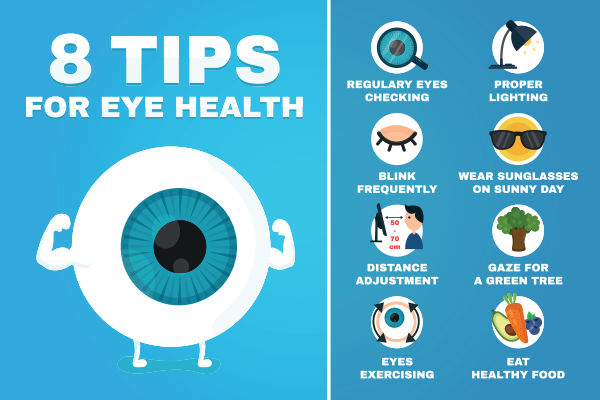
In today’s digital age, spending long hours in front of screens has become a part of our daily lives. Whether it’s work, entertainment, or socialising, screens dominate our day-to-day activities. However, this constant exposure can lead to a common yet often overlooked problem – Digital Eye Strain (DES), also known as Computer Vision Syndrome (CVS).
It’s a group of eye and vision-related issues that arise from prolonged digital device use. In this article, we’ll explore the causes, symptoms, and effective ways to relieve digital eye strain, ensuring your eyes stay healthy and comfortable.
Synopsis
Understanding Digital Eye Strain (DES)
Digital eye strain occurs when your eyes become fatigued from intense screen use, often leading to a range of uncomfortable and sometimes debilitating symptoms. Here’s a closer look at these symptoms and why they occur:
-
Eye Discomfort or Pain: Prolonged screen time forces your eye muscles to work harder, especially when focusing on small text or detailed images. This can lead to muscle fatigue and strain, causing discomfort or a dull ache around the eyes.
-
Blurred or Double Vision: Continuous focus on a screen without breaks can tire the eye muscles, affecting your ability to maintain clear, single vision. This can result in temporary blurred or double vision, especially after long hours of screen use.
-
Dry, Red, or Irritated Eyes: When you stare at screens, your blink rate drops significantly, reducing the distribution of tears across your eyes. This leads to dryness, eye redness, and a gritty or burning sensation.
-
Headaches: Eye strain can trigger tension headaches, particularly around the forehead and temples, due to the intense focus and stress on your eye muscles.
-
Neck and Shoulder Pain: Poor posture while using digital devices, combined with the strain of looking down or at an awkward angle, can lead to muscle tension and pain in the shoulders, neck, and upper back.
-
Increased Sensitivity to Light: Overexposure to bright screens or harsh glare can increase your eyes’ sensitivity to light, making it uncomfortable to use screens or be in brightly lit environments.
More Reads: Graves' Disease: Symptoms, Causes, and Treatment
These symptoms can significantly impact your productivity, concentration, and overall well-being if left unaddressed. Fortunately, there are several effective ways to reduce or even eliminate these issues, which we will cover in the following sections.

Causes of Digital Eye Strain
To effectively combat digital eye strain, it’s essential to understand its primary causes:
-
Screen Glare: Reflections and bright light from screens can strain your eyes.
-
Improper Screen Position: Viewing screens at the wrong angle or distance puts extra stress on your eyes.
-
Reduced Blinking: People tend to blink less when using digital devices, leading to dry eyes.
-
Blue Light Exposure: Digital screens emit blue light, which can disrupt your sleep cycle and increase eye strain.
-
Poor Lighting: Using screens in dimly lit or overly bright environments strains your eyes.
-
Extended Use Without Breaks: Continuous focus on screens without regular breaks leads to fatigue.
More Reads: Glaucoma - Causes, Types, Symptoms, Diagnosis, and Treatment
Effective Ways to Reduce Digital Eye Strain
1. Follow the 20-20-20 Rule
Every 20 minutes, look at something 20 feet away for at least 20 seconds. This simple practice helps reduce eye fatigue and dryness.
2. Adjust Your Screen Settings
Reduce the screen brightness and increase contrast to match the lighting around you. Consider using ‘Night Mode’ or ‘Blue Light Filter’ settings if available.
3. Blink More Often
Consciously blink more frequently to keep your eyes moist. You can also use lubricating eye drops if needed.
4. Optimise Your Workspace
Position your screen about an arm’s length away, with the top of the screen at or just below eye level. Use an ergonomic chair and ensure proper posture.
5. Reduce Glare
Use anti-glare screens or matte screen protectors to minimise reflections. Adjust the lighting to reduce screen glare.
6. Adjust Your Screen Angle and Distance
Your screen should be 20-28 inches from your eyes, with a slight downward angle to reduce strain.
7. Take Frequent Breaks
Regular breaks from your screen not only help your eyes but also reduce overall fatigue and stress.
More Reads: What Does High Bilirubin Mean? Understanding the Causes and Risks

Digital Eye Strain Prevention Table
|
Prevention Tip |
Description |
|
20-20-20 Rule |
Look 20 feet away every 20 minutes for 20 seconds. |
|
Blink More Often |
Keep your eyes moist by blinking frequently. |
|
Use Blue Light Filters |
Reduce blue light exposure through screen settings. |
|
Optimise Screen Settings |
Adjust brightness and contrast for eye comfort. |
|
Ergonomic Workspace |
Proper screen height, distance, and chair support. |
When to See a Specialist
If you experience persistent eye discomfort despite making these adjustments, it’s a good idea to consult an eye specialist. They can assess your eye health and recommend personalised solutions, such as prescription glasses or therapy.
Conclusion
Digital eye strain is a growing issue in our screen-dependent world, but it’s manageable with the right habits and tools. By taking proactive steps, you can reduce discomfort, protect your vision, and enhance your productivity.
If you’re experiencing severe or prolonged symptoms, visit Manipal Hospitals Dwarka for a comprehensive evaluation and personalised digital eye strain cure and digital eye strain treatment options. With advanced diagnostic tools and expert care, we’ll help you see the world clearly and comfortably.
For more information or to book an appointment, visit Manipal Hospitals Dwarka today.
FAQ's
It is primarily caused by prolonged screen use, improper screen distance, and reduced blinking.
While it can cause discomfort and temporary vision problems, it usually doesn’t lead to permanent damage.
Symptoms often improve within a few hours to days with proper eye care and screen adjustments.
There is no proven scientific evidence to show that blue light filtering glasses have any beneficial effect on digital eye strain or overall eye health.
Yes, through proper screen use, regular breaks, blinking more, and ergonomic workspace setups.





















 5 Min Read
5 Min Read






_Early_Detection.png)









